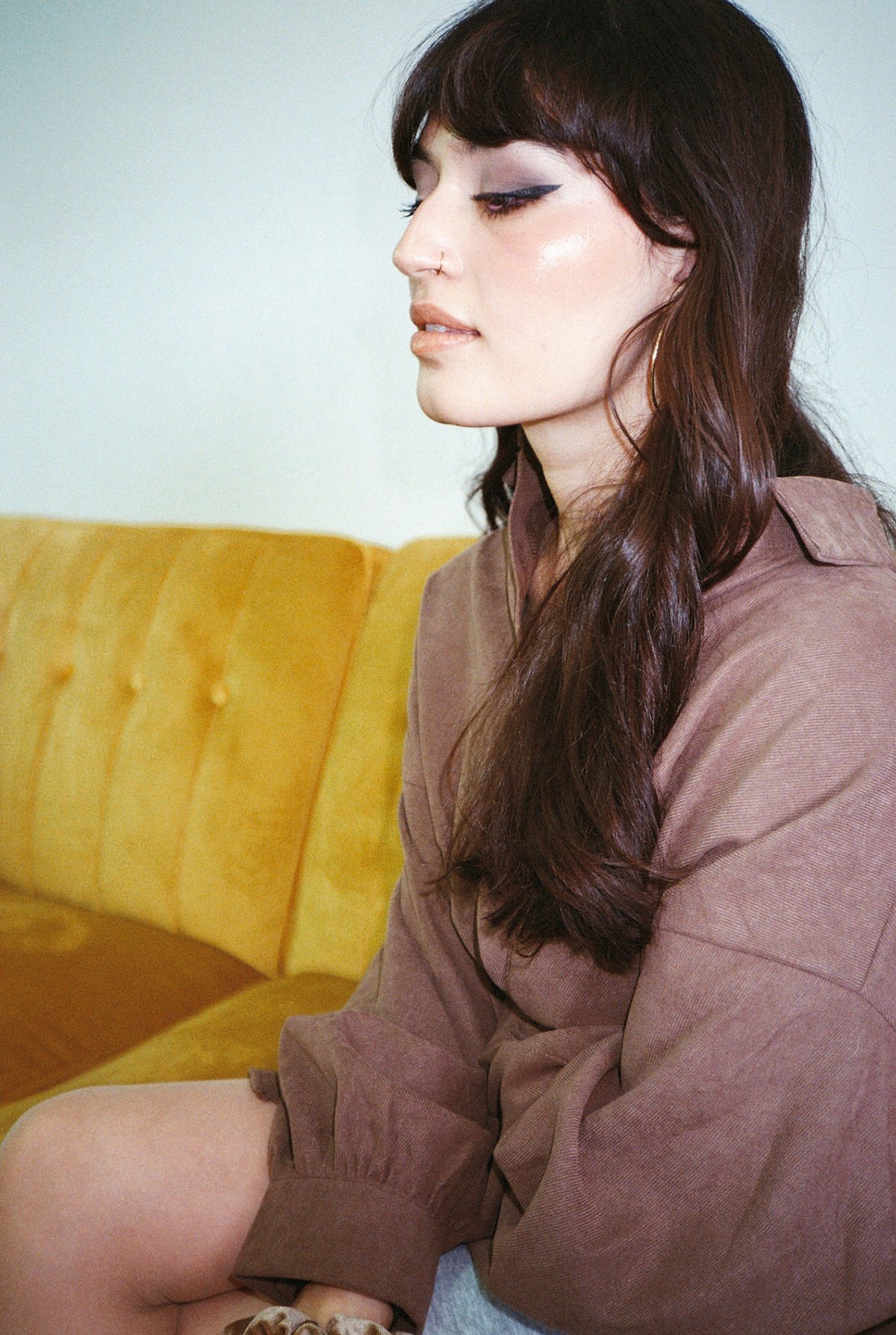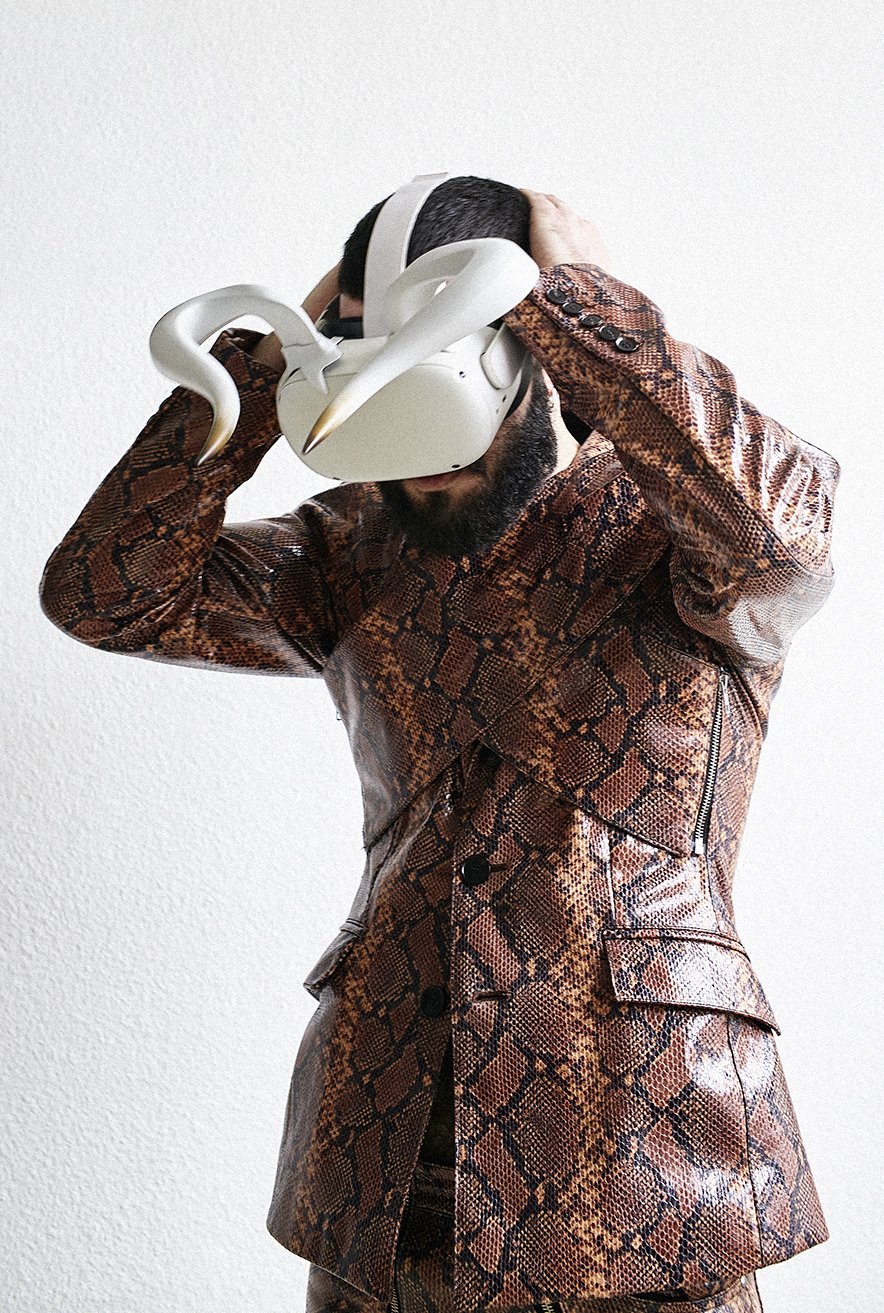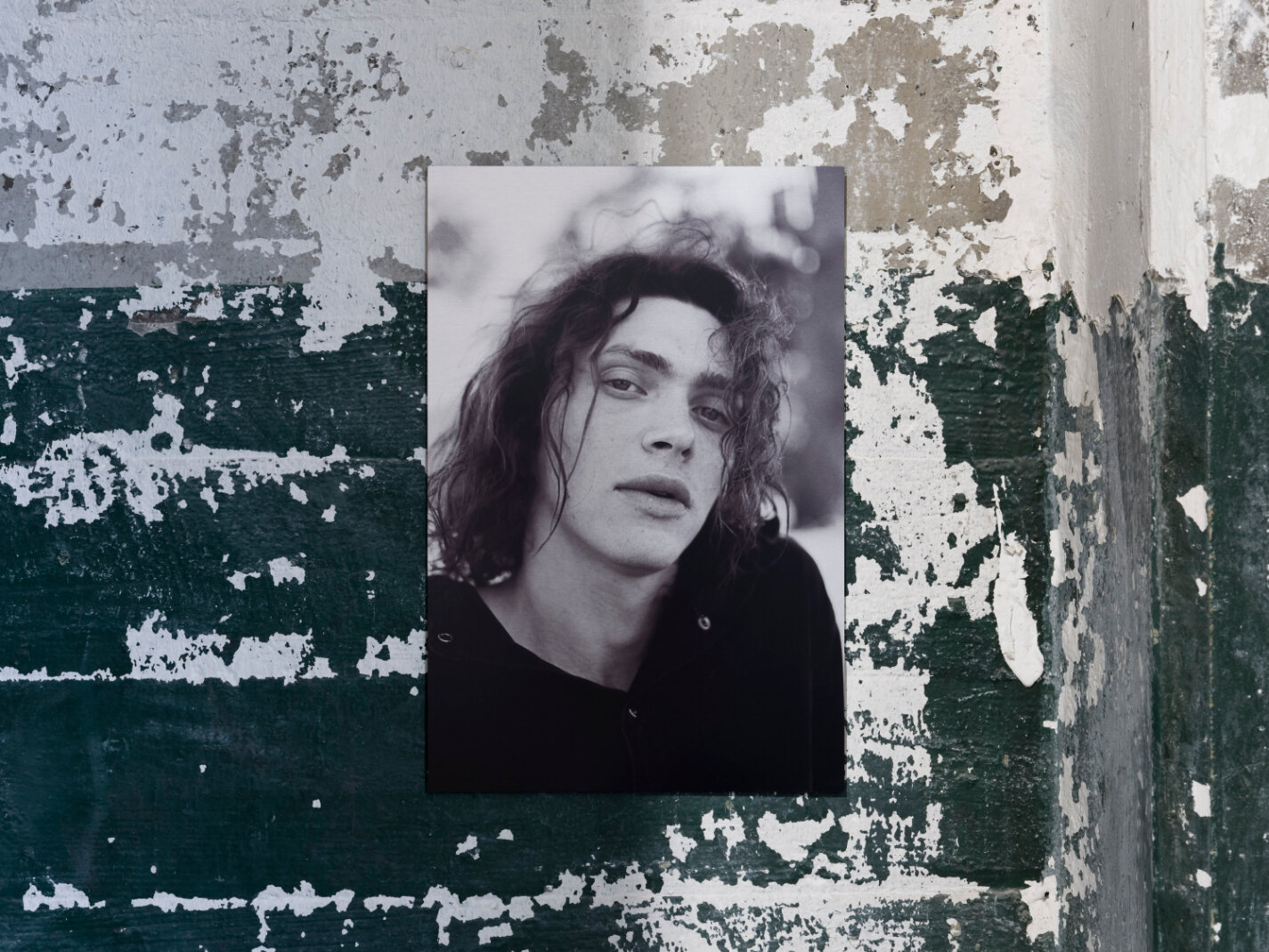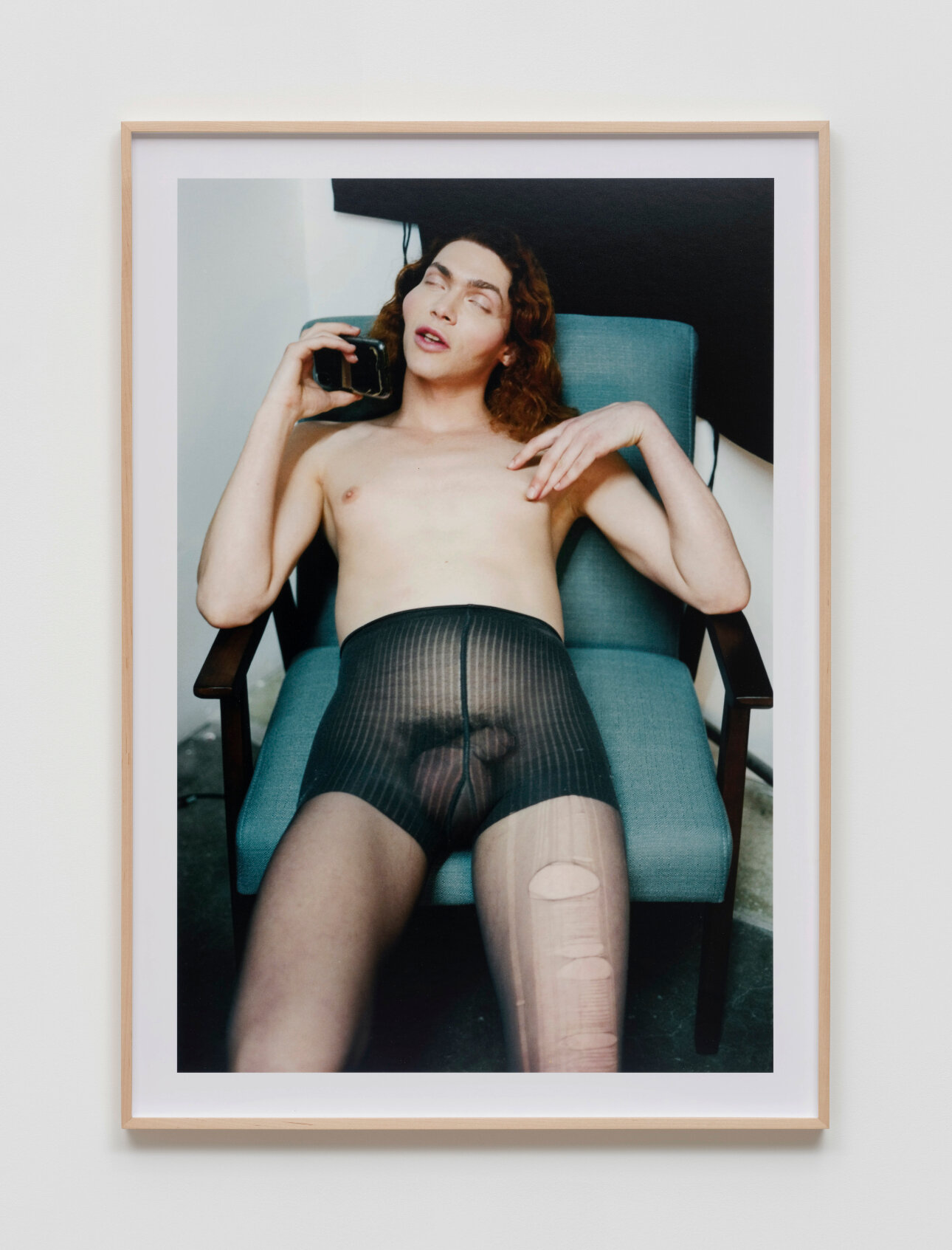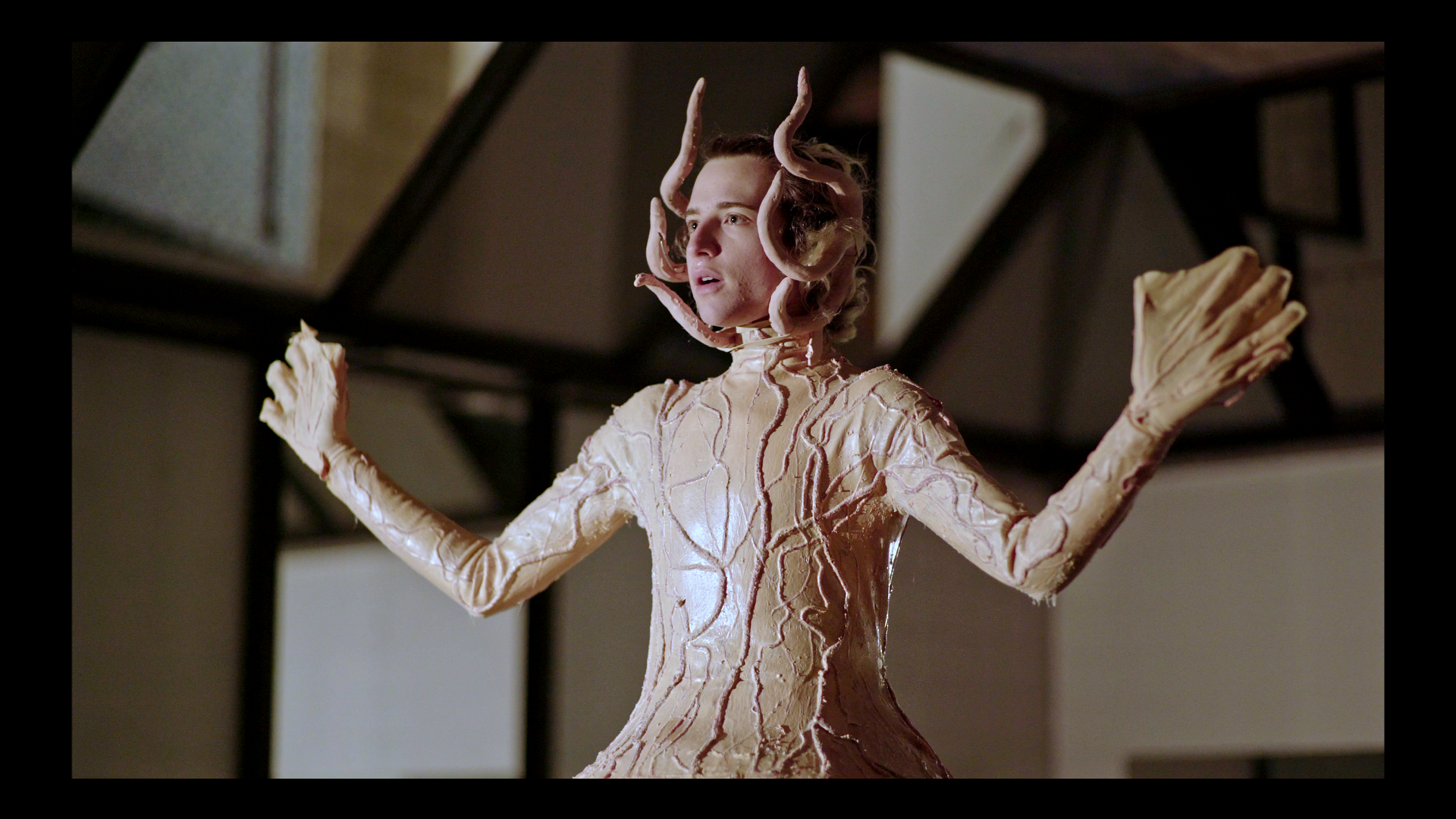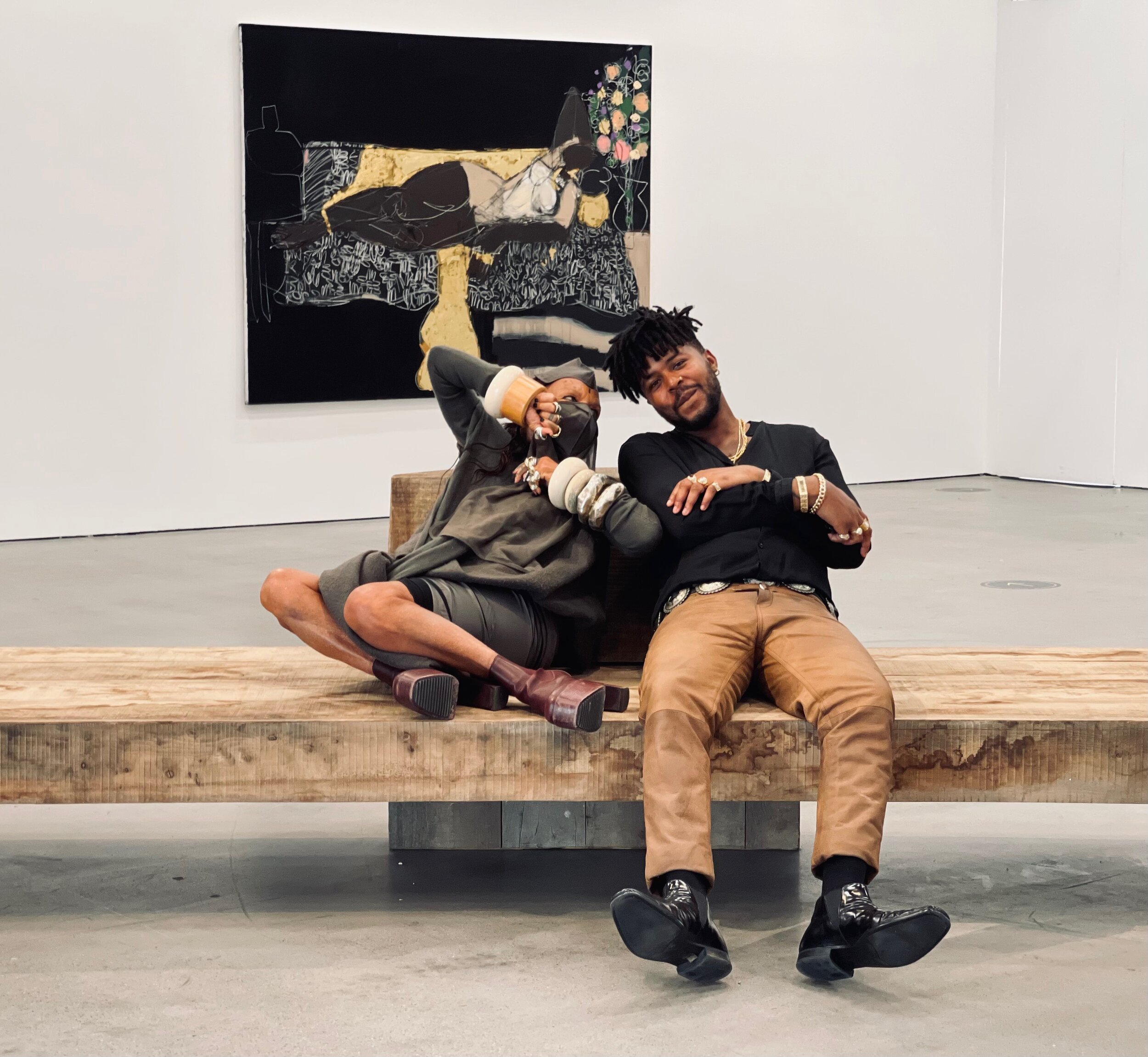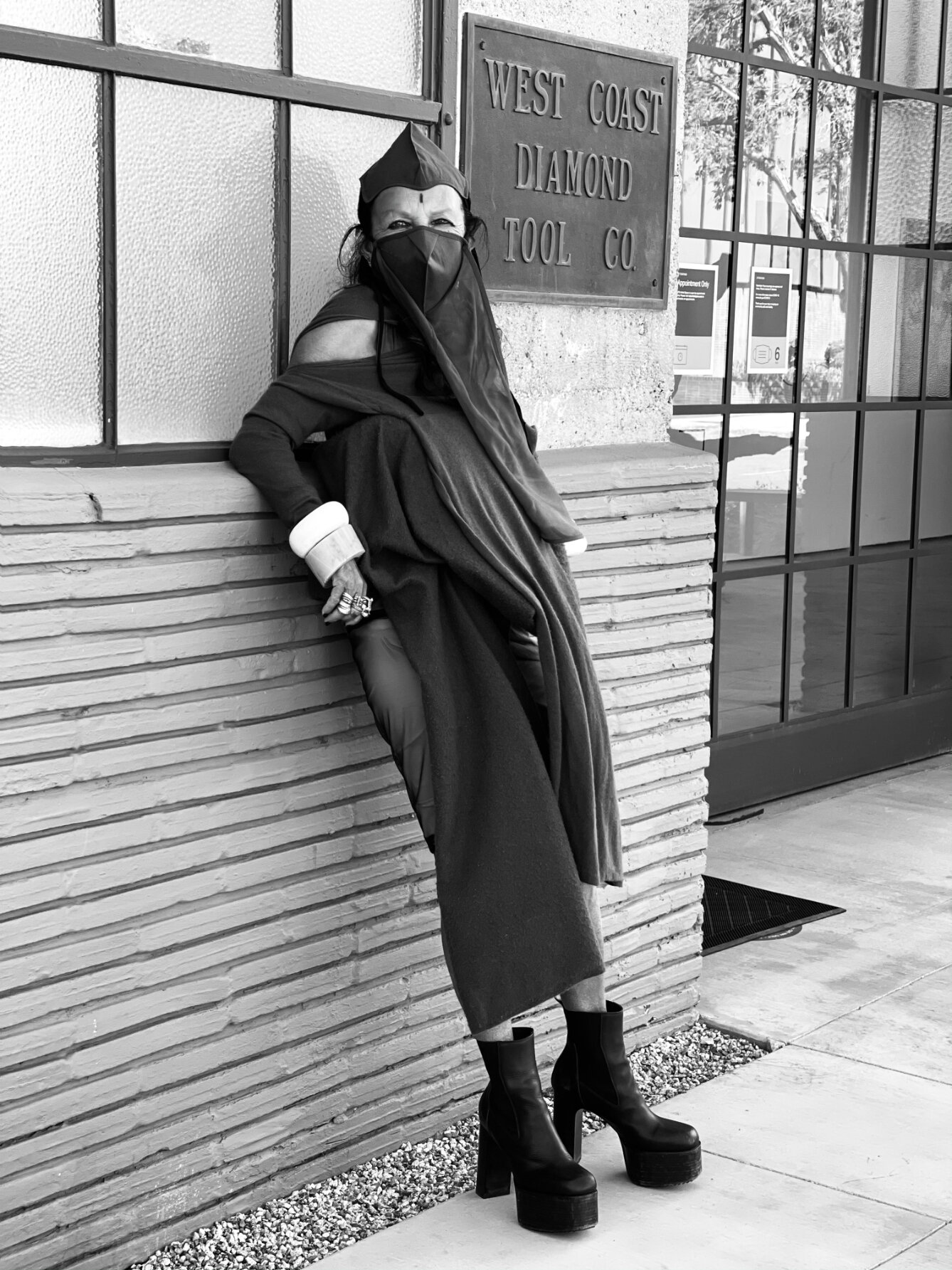Alannah Farrell
Alex, Resting
2022
Oil, acrylic, spray paint, and latex on canvas
50 x 78 in
text by Stella Peacock-Berardini
Alannah Farrell — the sexual awakening to colors and hues, to kinks and dreams. This queer, trans-identifying artist from rural New York gracefully depicts the real bodies of their queer scene in atmospheric paintings, the magic of which stems from the shapely emotional nuances of each subject. Here, their struggles are visible, but so are the celebrations. Though currently represented by Harper’s and Anat Ebgi, they've had an enduring journey to their current career, beginning as a child yearning for a creative outlet, from babysitter, to cashier, to model, to dungeon domme, and later, Cooper Union graduate, allowing their art to leap from the confinements of their bedroom to their first show at The Painting Center in New York. With the vibrant bodies and milky pigments enclosed in these works, Farrell expresses the multifaceted layers of their subjects’ queer identities, supporting the normalization of all expressions of beauty and power within the LGBTQI+ community. We see these queer bodies and faces through a lens unfocused on the taboo fascination that society perpetuates. It is one that instead centers the subject and how they wish to be seen and heard. Undoubtedly a New Yorker, Farrell pursues these intimate scenes and perseverances throughout the city with heart. They allow us, the viewers, into these blissful connections. We sat down with Farrell to discuss their expansive ideas surrounding queer identity in art, the fluidity of life, and their newest solo exhibition, I Want to Thank you, at Harper’s Gallery in New York.
STELLA PEACOCK-BERARDINI: Do you feel the queer identity or LGBTQ+ scene within New York differentiates heavily from other culture-heavy cities, like LA, for example, and does your work primarily present these moments in culture through an East Coast perspective?
ALANNAH FARRELL: I’ve visited but never lived outside New York, so my work is distinctly NYC, based on where I make it and the people I paint. Many different LGBTQIA+ scenes exist here.
Ultimately, I think painting exists in its world, not limited by geography or physicality — it doesn’t document in the same way photography can. Paintings might attempt a facsimile of reality, but they always deviate and become something else. That being said, I plan on meeting and working with people outside New York for my upcoming shows, and it will be interesting to see how my work changes when made in other places.
PEACOCK-BERARDINI: What does the fluidity and intimacy of bodies mean to you, and how has that changed throughout your career?
FARRELL: I find the fluidity of bodies endlessly fascinating, and I wish it were something our society treated with more curiosity, wonder, and celebration. A body’s age, ability, size, and secondary sex markers aren’t fixed. Fluidity, change, and transformation entered my paintings more obviously in the past years, but it’s something I’ve always focused on internally. Doesn’t everyone with a body think of change and transformation? Some specific paintings deal with fluidity and intimacy as a singular image. Another approach is that I have worked with the same people for years over multiple paintings. That is maybe my favorite way to depict fluidity and intimacy. Over time both the sitter and I, and our relationship will change.
PEACOCK-BERARDINI: The fascinating and intimate depictions of trans bodies appear to be a focus in your work. How did this start for you, and how have your experiences provided a gateway to this success?
FARRELL: The greater public isn’t familiar with a wide range of trans bodies. Trans bodies can be and look like any number of bodies, and they can be binary, non-binary, or fluid. Media pushes these thin, white, androgynous people, highly binary trans people, or low key transmisogynistic stereotypes as trans representation—which is bullshit and doesn’t represent the reality and majority of trans people. Also, not all the people I paint are trans.
As for my experiences, I’ve had a lifelong toxic relationship with my body. I think it’s an experience many people share. Trans or not, I would guess most people experience body dysphoria at least once in their life. Cis people experience body hatred in numerous ways. And I think they may have more in common with dysphoric trans people than they want to admit. We are stuck in our bodies 24/7, and even as someone who is good at disassociation, it is hard not to be aware of my body. These vessels we are stuck in hold both mental and physical pain, and I am sure my work relates to that on some level. Hopefully, when I paint other people, they experience more joy and wonder than pain in seeing their image come through in painted form.
PEACOCK-BERARDINI: How do you feel the palette of pastels and hues of blue within your newest exhibition at Harper’s Gallery play a role in your subjects’ bodies, and how do these colors connect throughout the pieces?
FARRELL: I’ve been attracted to a darker color palette heavy on blacks, greys, and rich deep blues for a long time. Almost comically a depressed person‘s color palette. The oldest painting in I Want To Thank You at Harper‘s is Annasophia At Dusk (Fidi), which I started in 2020. This painting transitions from richer, darker hues into a more pastel and luminescent palette. Annasophia styled herself in this wonderful opalescent dress, full of shimmering pastels. I loved how an epic twilight backlighted it on the evening she came to my studio. She has magical energy, which radiated quite literally that evening. From there, most of the other paintings were started in 2021 and finished in 22. This coincided with when I started HRT [hormone replacement therapy]. It was a tough year of personal upheaval and uncertain living situations. Meeting the wonderful individuals that came and posed in the various places I was living and working in became a healing experience throughout a year of radical changes and instability. And many of these individuals were going through multitudes of trying situations, too. This may be a reductive take, but manipulating light and color towards an airier and pastel direction while keeping a rich, somber undercurrent felt the truest to both individual narratives and my emotional state.
Alannah Farrell
Ari (Downtown Brooklyn)
2022
Oil, acrylic, and latex on canvas
40h x 60w in
PEACOCK-BERARDINI: The ability to translate the experiences of the many queer muses in your artwork is incredible. So many triumphs and hardships can be seen within these models, but do you ever feel overwhelmed by these struggles that you and others face, and do you feel like your artwork ever projects those moments of frustration or fear?
FARRELL: I love this question. Yes, I often feel overwhelmed. I don’t personally know anyone who isn’t feeling overwhelmed at least some of the time. My paintings probably do project frustration, fear, and hopefully other emotions, like love, resistance, solidity, occasional humor or playfulness, and transcendence. I try to be mindful of not harming the people I paint with the images I create. Because these are real people, even if the paintings have fantasy elements. I think about the projected messages and how the model feels about seeing their image while working on any painting.
PEACOCK-BERARDINI: As a trans artist who produces moments of queer vulnerability, do you feel your audience mostly caters to the LGBTQ+ community as a way to provide a safe space for these experiences or as a mixture of something entirely different?
FARRELL: The art world is majority cisgendered. That’s a fact right now, in 2022. So, whether I like it or not, my audience is not mostly LGBTQIA+, although I hope it caters to us. I question how much power or influence in creating societal change art (that is not propaganda) has. But if seeing my work opens cisgendered and cishet people to learn more about what trans and queer people are going through and maybe empathize, I would feel good about it. As a working trans artist, I hope to contribute to safe places, specifically for those who sit for me. I see the studio as a space to escape the bullshit and just be, whatever that means. Real, messy, evolving, angry, grieving, joyous, and shameless. Sometimes I feel the process of creating paintings and working with others is more important than the result.
PEACOCK-BERARDINI: In the mass media and social networks, big companies often monetize trans or queer trauma; how do you feel about this, and is there a proper balance that can be made between trauma and simply existing as queer within these TV and movie storylines?
FARRELL: I don’t watch much TV or movies and don’t spend much time on the internet, so I might be the worst person to ask! I think monetizing trauma porn is popular and can be done in different mediums. If individuals or corporations are profiting off trans and queer trauma, or any trauma for that matter, and not giving back to those communities in equal amounts, then it is exploitation. It is something I think about and try to be extra conscious of, even on a small scale. Having people from the actual community on every level, production, writing, funding, etc., lessens the chance that narratives will be flattened into trauma porn. *Hint, the art world, that would be people with money and power: dealers, collectors, and museum directors*
Someone with lived experience creating work funded by people with lived experience seems like it would lead to more nuanced work, TV, media, and storylines.
Alannah Farrell
Serene, Sky, and Kaz Bathed in Light (Bushwick)
2022
Oil, acrylic, spray paint, and latex on canvas
70h x 130w in
PEACOCK-BERARDINI: Was there a moment of clarity for you growing up, when you felt seen as you grew into your queer identity?
FARRELL: Honestly, I’m not sure people saw my gender queerness until adulthood. Regarding internal moments of clarity, around age 9, I knew I was sexually attracted to women and effeminate men. I always felt like an effeminate boy/man. I was in love with (but more deeply wanted to be) Michael Jackson, Prince, Frank N. Furter from RHPS, the classics. Any character that was blatantly and stereotypically homosexual, I identified with (which there was a surprising amount to choose from in the ‘90s cartoons I would watch at my friend's house.) We would role-play in games — elementary school age — and I’d always play as those characters. Growing up, there wasn’t commonly-known language to describe genders outside the binary or transgendered people. Cross-dressing was known. I grew up in a creative household and loved fashion, but I didn't necessarily associate clothing with gender — it was all theatre. Because of the histories of famous creative individuals, society thinks artists, more than other people, have a higher probability of being gay, queer, melodramatic, crazy, or a combo of those. So, even if my family didn't necessarily see my queerness, they labeled me with an “artistic personality” from day one. (I’m pretty sure it was code for moody, pain in the ass.) There were challenges in the conservative working-class area of upstate New York where I grew up, but I'm fortunate my friends and bio-fam didn't directly have an issue with queer people.
PEACOCK-BERARDINI: How do you feel this newest exhibition allows queerness to transcend the physical realm and disrupt time? What are some experiences in queer social scenes where you witnessed this moment of altering and challenging the norms of time and space?
FARRELL: Queer nightlife disrupts time and transcends the physical realm. In NYC, I wish queer nightlife workers were protected and paid more. That’s another conversation, ha. I think these paintings in I Want To Thank You are familiar enough to communicate with the past, but I hope the dialogue centers more on the present and future. Ultimately, I view the painting process and studio time as the most transcendent, narcotic, and time-disruptive in both arduous and ecstatic ways. Whatever work I make is and always will be inherently queer. I try to trust that people can feel the love and pain I unashamedly put into a painting and not worry too much about embarrassment. That approach to making paintings feels very queer, timeless, and freeing to me.
Alannah Farrell’s debut solo exhibition I Want to Thank You was on view from June 30 - August 13 2022 @ Harper’s Gallery CHELSEA 534 West 22nd Street


![Alannah Farrell [detail of] X (Pearl Street) 2022 Oil, acrylic, and latex on canvas 78h x 50w in](https://images.squarespace-cdn.com/content/v1/544cb720e4b0f3ba72ee8a78/1664929363203-TJY0DI2ELRJ30BSG7XWM/AFAR011+-+Alannah+Farrell+-+X+%28Pearl+Street%29+04.jpg)


















